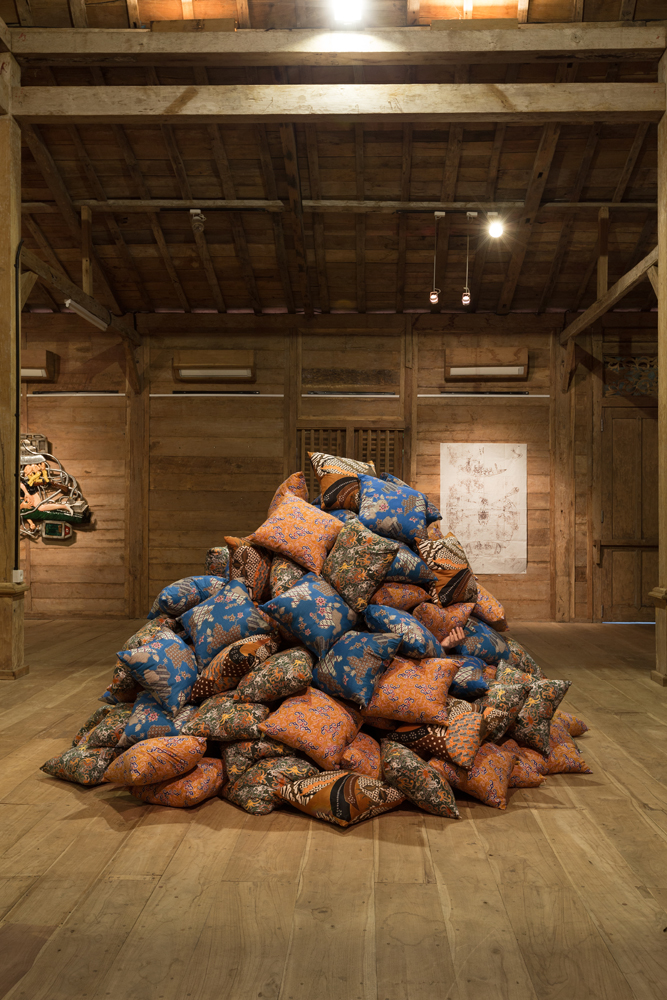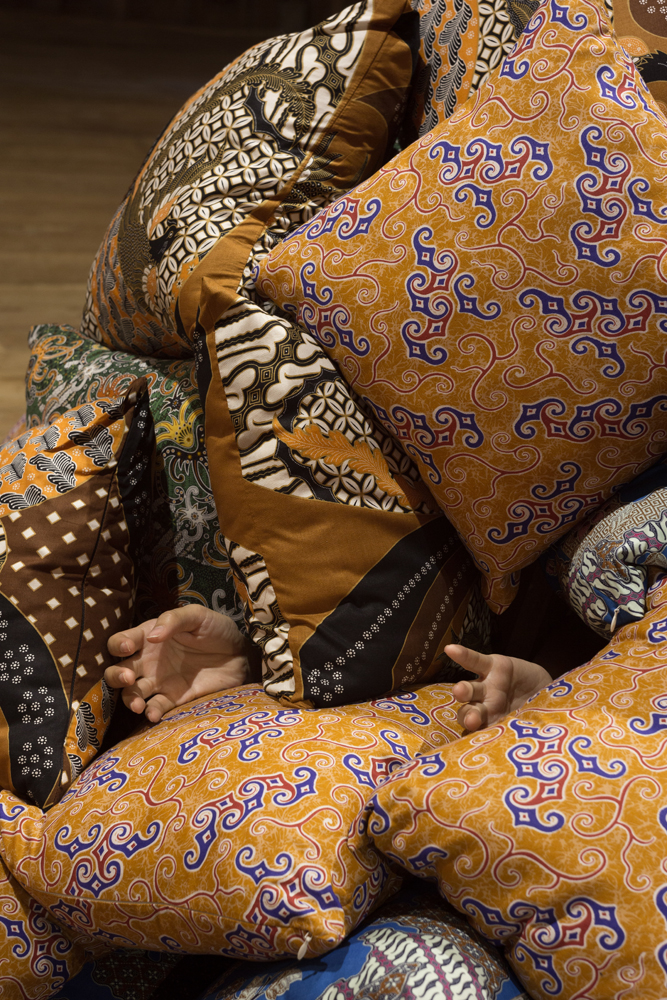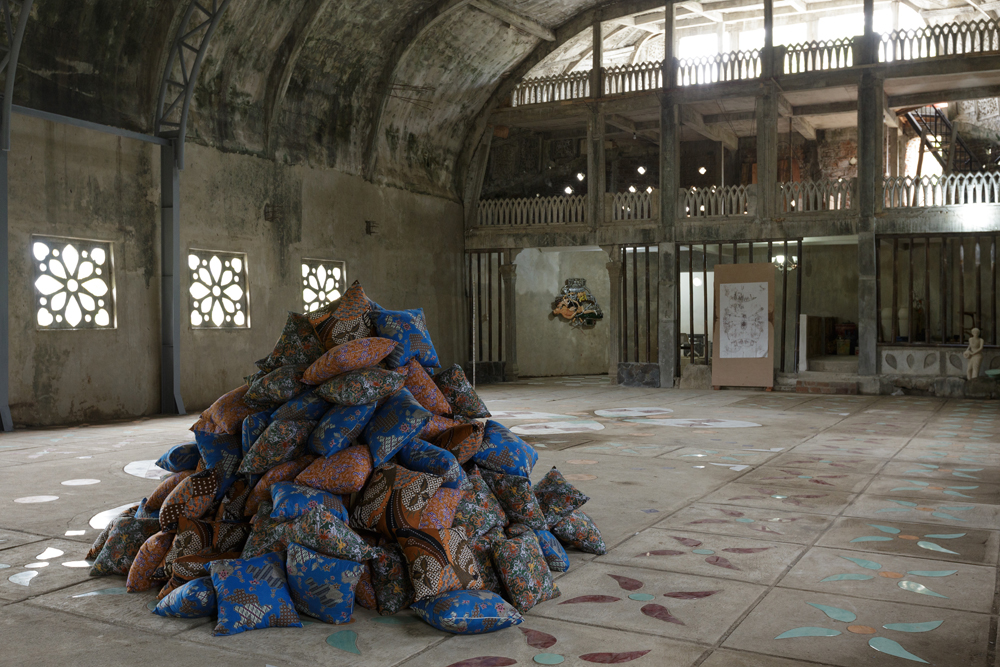Installation views, Kayu, Bali and Chicken Church, Central Java
p
p
Artists: Jumaldi Alfi, Ashley Bickerton, Lupo Borgonovo, Marco Cassani, Patrizio Di Massimo, Fendry Ekel, Dor Guez, Agnieszka Kurant, Filippo Sciascia, Alice Tomaselli, Entang Wiharso, and Alexandra Zuckerman
Exhibition title: Ritiro
Venue: Kayu, Lucie Fontaine, Rumah Topeng Dan Wayang, Bali, Rumah Doa Bagi Semua Bangsa, Java, Indonesia
Date: December 4 – 20, 2016
Photography: all images copyright and courtesy of the artists and Kayu, Lucie Fontaine, Indonesia
RITIRO
IN MEMORY OF AGUSTINUS PRAYITNO
We can only be hunters of objects, and must even be non-lethal hunters, since objects can never be caught. The world is filled primarily not with electrons or human praxis, but with ghostly objects withdrawing from all human and inhuman access, accessible only by allusion and seducing us by means of allure.*
Kayu – Lucie Fontaine’s branch in Bali, Indonesia – is pleased to present its fifth project, “Ritiro” [The Retreat], a two-venue exhibition of international artists on view at Rumah Topeng Dan Wayang [The House of Masks and Puppets] in Bali and Rumah Doa Bagi Semua Bangsa [The House of Prayer for All Nations] in Java, Indonesia. The participating artists are: Jumaldi Alfi, Ashley Bickerton, Lupo Borgonovo, Marco Cassani, Patrizio Di Massimo, Fendry Ekel, Dor Guez, Agnieszka Kurant, Filippo Sciascia, Alice Tomaselli, Entang Wiharso, and Alexandra Zuckerman.
The exhibition aims to put forward the identity of Kayu, showing artworks altrove [elsewhere], in the middle of nowhere, surrounded by nature, a place between magic and dream, in opposition to the traditional white cube gallery and the environment that surrounds it. Furthermore the title, “Ritiro”, which is the Italian word for retreat, refers to The Retreat (or the York Retreat), the country house founded by William Tuke in 1796 in Lamel Hill, York, England, for the treatment of people with mental health-related needs. In his book Madness and Civilization: A History of Insanity in the Age of Reason (1961) Michel Foucault described The Retreat as “a contractual alliance, a convergence of interests, organized on the type of simple partnerships”.
Specifically, “Ritiro” aims to reflect upon the concept of the artwork as a self-sufficient entity able to generate and acquire new values within “a permanent autonomous zone where objects are simply themselves.”* The concept of this project refers to the idea that things without life, or seemingly without life, can actually have their own existence. Inspired by Balinese culture, which is a mixture of Animism and Hinduism and in which Kayu exists, the exhibition implements theories from Western contemporary philosophies such as Speculative Realism and OOO (Object-Oriented Ontology).
In particular, “Ritiro” takes – literally and metaphorically – the artworks away from the comfort zone of the white cube space, creating both physical and mental distance between the artworks and contemporary society. Over the duration of this project, the artworks will be presented in two different venues: from 4 to 15 December 2016 at Rumah Topeng Dan Wayang in Bali, and on 20 December at Rumah Doa Bagi Semua Bangsa in Java.
The intimate atmosphere of Kayu – which is located in a joglo, a traditional Javanese wooden house within the context of Rumah Topeng Dan Wayang – will serve as a statement against the art field’s rejection of domestic spaces in favour of more neutral and aseptic space. This is a very dear issue to Lucie Fontaine, as demonstrated with projects such as “Estate” and her series of exhibitions “Domesticity,” the fifth iteration of which served as Kayu’s grand opening.
The one-day relocation of the artworks to the Rumah Doa Bagi Semua Bangsa – a building in the shape of a gigantic dove located in a remote area of central Java – is a magical action that brings the artworks to a faraway, androgynous zone, pushing the artworks to their limits, questioning their authorship or new anonymity; here they confront themselves and the surrounding nature. Rumah Doa Bagi Semua Bangsa was conceived as a site of worship where people of all religions could pray. Consequently the building came to be used as a reception centre for people with mental problems. Abandoned for several years, the building is now an attraction for local tourists.


